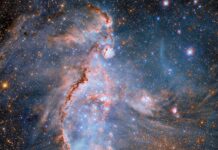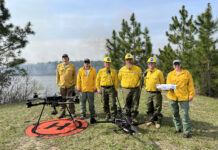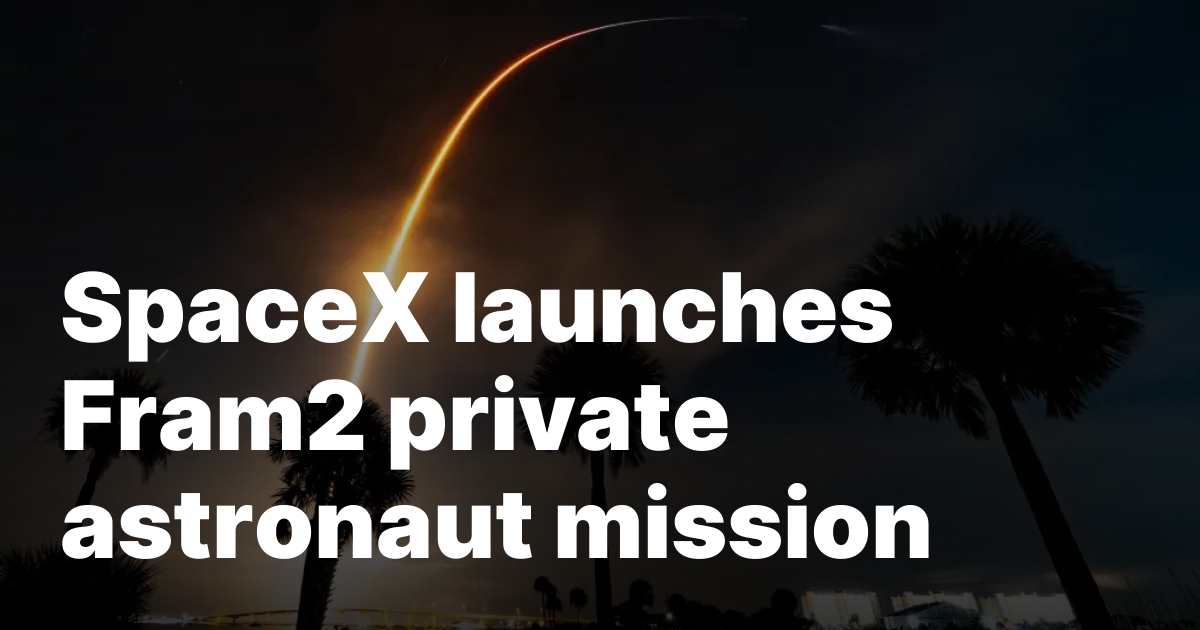SpaceX’s Fram2 Mission: A Historic Polar Expedition
SpaceX has once again pushed the boundaries of space exploration, launching a groundbreaking mission that marks a significant milestone in human spaceflight. The mission, dubbed Fram2, is a private astronaut mission involving a Crew Dragon spacecraft named Resilience. This mission is particularly notable as it is the first crewed spaceflight to traverse over the Earth’s poles, a feat that has sparked interest and excitement in the space community.
Launch Details and Initial Stages
On March 31, under the clear night sky, a Falcon 9 rocket lifted off from NASA’s Kennedy Space Center at precisely 9:47 p.m. Eastern Time. The rocket carried with it the Crew Dragon spacecraft, Resilience, which separated from Falcon 9’s upper stage approximately ten minutes post-launch, embarking on its historic journey.
Fram2 represents the sixth mission of a Crew Dragon spacecraft that does not involve NASA. What sets Fram2 apart is its trajectory; it is the first crewed mission to enter a polar orbit with an inclination of 90 degrees. This trajectory allows the spacecraft to pass directly over both the North and South Poles from low Earth orbit. In contrast, the highest inclination previously achieved on a crewed flight was 65 degrees during the early Soviet Vostok missions.
The Crew Behind Fram2
The mission’s commander, Chun Wang, is an intriguing figure. A cryptocurrency billionaire originally from China, Wang now holds citizenship in Malta. His passion for exploration and the unknown drives his involvement in this mission. He and SpaceX first announced plans for Fram2 in August 2024, with initial timelines suggesting a launch by the end of that year.
In a pre-flight discussion on social media held on March 28, Wang shared his lifelong curiosity about the polar regions, recalling how he used to be fascinated by the uncharted white spaces on world maps as a child. For Wang, the mission over the poles is a unique endeavor, offering a fresh perspective on space exploration distinct from missions to the International Space Station (ISS).
Jannicke Mikkelsen, a Norwegian cinematographer, serves as the vehicle commander for Fram2. Her role involves overseeing Dragon’s operations during the dynamic phases of the flight, particularly during launch and splashdown. Mikkelsen emphasizes the importance of understanding the spacecraft’s communication systems, highlighting the interactive nature of the role.
Rabea Rogge, a robotics researcher from Germany, is the mission pilot. As the first German woman to venture into orbit, she supports Mikkelsen by monitoring spacecraft displays. Despite Dragon’s largely automated systems, Rogge plays a crucial role in data collection during the flight.
The team also includes Eric Philips, an experienced polar explorer from Australia. Philips, who has visited the poles approximately 30 times, is the mission specialist and medical officer for Fram2. He likens the upcoming journey in Dragon to the challenges faced during polar expeditions, such as enduring days in a tent amidst a polar blizzard.
Scientific and Technological Endeavors
Beyond its pioneering trajectory, Fram2 is a mission rich in scientific pursuits. The crew will conduct 22 experiments sourced from eight different countries. These experiments cover a diverse range of topics, from observing polar auroras to testing crew health, and even studying the growth of mushrooms in microgravity.
Marissa Rosenberg, senior medical research engineer at SpaceX, noted the crew’s enthusiasm for exploration during the mission planning phases. SpaceX selected many of the mission’s payloads with this exploratory spirit in mind. Amongst the payloads is the first X-ray machine to be flown in space, which will facilitate medical X-rays and equipment inspections. Another experiment involves testing a device designed to optimize exercise in the confined space of Dragon by restricting blood flow to the legs, enhancing the benefits of exercise in microgravity.
The Fram2 mission also presents an opportunity to test crew autonomy post-splashdown. The crew will exit the capsule independently, simulating scenarios for future missions to the Moon and Mars, where no recovery teams will be waiting.
Return to the West Coast
Fram2 will spend approximately three and a half days in orbit before making its return to Earth. This mission is noteworthy for being the first Crew Dragon mission to splash down off the coast of California, a departure from previous missions that concluded off Florida’s coast.
SpaceX’s decision to shift recovery operations to the West Coast was announced in July of the previous year. The change aims to manage debris from the trunk section of Dragon, which has historically made uncontrolled reentries post-jettison. Past incidents have seen trunk debris reach terrestrial locations, from Australia to North Carolina and most recently, Morocco.
For Fram2 and subsequent missions, the spacecraft will perform its deorbit burn with the trunk attached, which will then be jettisoned. This strategy ensures a controlled reentry, with predictions as to where debris will land. By relocating splashdowns to California, SpaceX ensures any trunk debris will fall into the ocean, minimizing risks to populated areas.
The return to California is reminiscent of the first-generation cargo Dragon splashdowns. Jon Edwards, vice president of Falcon and Dragon at SpaceX, highlighted the favorable weather conditions on the West Coast, citing less wind interference at ground level as a benefit. However, the marine layer of clouds presents a unique challenge, potentially affecting helicopter operations for crew recovery.
Trajectory and Mission Design
The Fram2 mission necessitated a novel trajectory for the Falcon 9 launch, heading southward off Florida’s coast. This trajectory, as Jon Edwards explains, is meticulously programmed to avoid land masses such as Florida, Cuba, Panama, and Peru, ensuring a safe water landing in case of an abort scenario.
Fram2 builds on the legacy of previous missions, including Inspiration4 and Polaris Dawn, which did not dock with the ISS. The mission utilizes the large window, or cupola, first used on Inspiration4, providing the crew with unparalleled views of Earth.
Kiko Donchev, vice president of launch at SpaceX, expressed that the mission’s design could have been realized sooner with the right technological advancements. He emphasized SpaceX’s approach of building upon existing capabilities to push the envelope further.
In summary, the Fram2 mission is a testament to SpaceX’s commitment to innovation and exploration. With its pioneering trajectory, diverse scientific investigations, and strategic recovery planning, Fram2 sets the stage for future expeditions beyond Earth’s orbit. As SpaceX continues to chart new frontiers, the possibilities for human exploration seem limitless.
For more Information, Refer to this article.




















![Samsung’s Innovation Sparks Progress in Science and Industry: Quantum Dots How Samsung’s Engineering Feat Became a Catalyst for Scientific and Industry Advancement [Interview on Real Quantum Dots Part 2.]](https://www.hawkdive.com/media/samsung-tvs-and-displays-samsung-quantum-dots-technology-qled-tvs-quantum-dots-experts-interview-par-218x150.jpeg)













